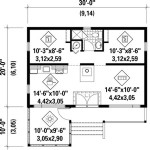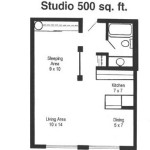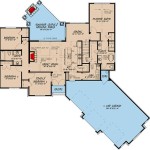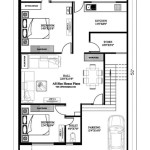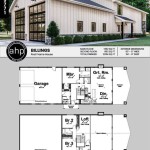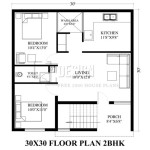Designing the Ideal Master Bedroom with Walk-In Closet and En-Suite Bathroom
The master bedroom, often considered a sanctuary within the home, benefits significantly from a well-planned layout incorporating a walk-in closet and an en-suite bathroom. This trifecta provides convenience, privacy, and a heightened sense of luxury. Careful consideration of space, layout, and design elements is essential to maximizing the functionality and aesthetic appeal of this private domain. A master bedroom with a walk-in closet and en-suite bathroom represents a significant investment in both comfort and property value, making meticulous planning a worthwhile endeavor.
Before embarking on the design process, it is crucial to assess the available space. The overall dimensions of the master bedroom are paramount in determining the feasibility of including both a walk-in closet and an en-suite bathroom without compromising the room's functionality or creating a cramped atmosphere. A detailed floor plan, incorporating precise measurements of the existing room or proposed construction, is the foundation for intelligent design decisions.
Different layouts cater to diverse preferences and spatial constraints. A linear layout, where the bathroom and closet are positioned along one wall of the bedroom, can be efficient for narrower rooms. Alternatively, a layout incorporating a small hallway or dressing area between the bedroom and the closet/bathroom can offer enhanced privacy and a more defined transition between spaces. A corner layout, where the bathroom and closet are situated in adjacent corners of the bedroom, allows for creative space utilization and can provide a visually appealing design.
The placement of windows and doors plays a crucial role in optimizing natural light and traffic flow. Windows should be strategically positioned to maximize daylight while preserving privacy. Door placement should facilitate easy access to the closet and bathroom without disrupting the bedroom's layout or creating obstacles. Consider the swing direction of doors to prevent them from interfering with furniture placement or creating safety hazards.
Beyond spatial considerations, storage needs and personal preferences greatly influence the design of both the walk-in closet and the en-suite bathroom. Understanding the volume and type of clothing, shoes, and accessories requiring storage is essential for planning the closet's organization system. Similarly, assessing the desired features and functionalities of the bathroom, such as a soaking tub, separate shower, double vanity, or private toilet room, is vital for creating a functional and aesthetically pleasing space.
Optimizing the Walk-In Closet Design
The walk-in closet is more than just a storage space; it can be a personalized dressing area designed to streamline daily routines. Strategic organization is key to maximizing its functionality. A well-designed closet should incorporate a variety of storage solutions, including hanging rods at different heights for various garment lengths, shelving for folded items, drawers for smaller articles of clothing and accessories, and dedicated spaces for shoes, handbags, and other personal belongings. The use of adjustable shelves and rods allows for customization as storage needs evolve.
Consider incorporating a dressing area within the walk-in closet, if space permits. This can include a comfortable chair or bench, a full-length mirror, and adequate lighting for dressing and grooming. Integrating a small vanity with a mirror and storage can further enhance the functionality of the dressing area. Thoughtful lighting design is crucial in a walk-in closet. A combination of ambient, task, and accent lighting ensures adequate visibility for selecting and organizing clothing. Recessed lighting provides overall illumination, while task lighting, such as strip lights under shelves or spotlights focused on specific areas, enhances visibility for detailed tasks. Accent lighting can be used to highlight specific items or add a touch of elegance to the space.
Materials and finishes play a significant role in the overall aesthetic of the walk-in closet. Consider using durable and easy-to-clean materials for shelving, drawers, and hanging rods. The choice of finishes should complement the overall design of the master bedroom. Options range from traditional wood finishes to modern laminate and metal options. Mirror doors on closet cabinets can create the illusion of more space and provide a full-length reflection for dressing. Proper ventilation is important to prevent moisture buildup and odors in the walk-in closet. Ensure adequate airflow by incorporating ventilation fans or strategically placed vents. Consider using moisture-absorbing materials or dehumidifiers in areas with high humidity.
Creating a Luxurious and Functional En-Suite Bathroom
The en-suite bathroom should be a relaxing and rejuvenating space, designed to meet the specific needs and preferences of the occupants. Careful planning of the layout, fixtures, and finishes is essential for creating a functional and aesthetically pleasing bathroom. The layout of the en-suite bathroom should optimize space utilization and ensure ease of movement. Consider the placement of key fixtures, such as the toilet, sink, shower, and bathtub, to create a logical and efficient flow. Allow for adequate space around each fixture to prevent overcrowding and ensure comfortable use.
The selection of fixtures and fittings greatly influences the functionality and aesthetic of the bathroom. Choose fixtures that are both stylish and durable, and that complement the overall design of the master bedroom. Consider the size and shape of the shower, bathtub, and sink to ensure they are proportionate to the size of the bathroom and meet the specific needs of the users. Opt for water-efficient fixtures to conserve water and reduce utility bills. The selection of materials and finishes plays a crucial role in creating the desired ambiance in the en-suite bathroom. Select materials that are durable, water-resistant, and easy to clean. Common choices include ceramic or porcelain tile for flooring and walls, granite or quartz for countertops, and chrome or brushed nickel for fixtures. The color palette should be calming and relaxing, with options like neutral tones, soft blues, and greens often preferred.
Lighting is another critical element in the en-suite bathroom design. A combination of ambient, task, and accent lighting is ideal for creating a well-lit and functional space. Recessed lighting provides overall illumination, while vanity lighting illuminates the sink and mirror area. Accent lighting can be used to highlight architectural features or add a touch of elegance. Consider incorporating natural light by adding windows or skylights, if possible. Ventilation is essential for preventing moisture buildup and odors in the en-suite bathroom. Install a high-quality exhaust fan to remove moisture and improve air circulation. Consider incorporating a window that can be opened to provide natural ventilation.
Integrating Design Elements for a Cohesive Master Suite
The master bedroom, walk-in closet, and en-suite bathroom should function as a cohesive unit, with design elements that complement and enhance each other. Careful consideration of color palettes, materials, and lighting is essential for creating a harmonious and inviting space. Carry the color palette from the master bedroom into the walk-in closet and en-suite bathroom to create a sense of continuity. Choose complementary colors and finishes to create a visually appealing and harmonious design. Consider using accent colors to add pops of interest and personality to each space.
Select materials and finishes that are consistent throughout the master suite. For example, if you choose wood flooring for the master bedroom, consider using a similar wood finish for the closet shelving or bathroom vanity. Similarly, if you choose granite countertops for the bathroom, consider incorporating granite accents in the master bedroom. Coordinate the lighting fixtures in the master bedroom, walk-in closet, and en-suite bathroom to create a cohesive lighting scheme. Choose similar styles and finishes for lighting fixtures to create a unified look. Consider using dimmers to control the intensity of the lighting and create different moods in each space.
Pay attention to the details to create a luxurious and personalized master suite. Consider adding artwork, plants, and decorative accessories to personalize the space and reflect your personal style. Incorporate soft textures, such as rugs, throws, and pillows, to add warmth and comfort to the master bedroom. Consider adding a seating area in the master bedroom to create a relaxing and inviting space. Thoughtful design and attention to detail are key to creating a master bedroom with a walk-in closet and en-suite bathroom that is both functional and aesthetically pleasing, enhancing the overall living experience.

37 Wonderful Master Bedroom Designs With Walk In Closets

Master Closet Bathroom Design Making A Plan Of

Design Dilemma Of The Master Bathroom Walk In Closet

7 Inspiring Master Bedroom Plans With Bath And Walk In Closet For Your Next Project

Primary Bedroom Layout With Walk In Closet

The Walk Through Closet In This Master Bedroom Leads To A Luxurious Bathroom

Bedroom With Walk In Closet

How To Design A Master Suite Feel Luxury

Master Suite Design Dream Closet Dimensions Features And Layout Forward Build Remodel

Award Winning Remodel Ultimate Master Suite Jmc Blog



